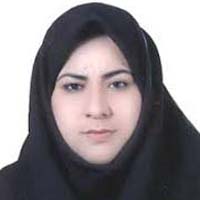Potential Erosion Assessment of Dastkan Region Using SLEMSA Model Print
Author(s):
Abstract:
Introduction
In geographical studies, soil is not only considered as a natural resource, but also it is exposed to a corrupted danger called erosion, so it needs study, guarding and control. On one hand, the concept of erosion, from geomorphological point of view, is referred to processes which shape the earth surface, and on the other hand, it is related to the factors of soil guarding. The fact is that different results are derived from evaluating erosion risks through various methods, and quantity and type of soil erosion also vary from one place to another. These quantities would be very useful for planning. First Elwell (1978) applied the SLEMSA Model to assess rates of erosion in Zimbabwe. Her research showed that this strategy is acceptable for the study of soil conservation in the country. After Elwell and Stocking (1984 and 1982), this model was used for assessing erosion in North Africa. Igwe et al (1997) to estimate the potential risk of erosion in South West Nigeria compared the USLE and SLEMSA methodology for mapping erosion and indicated the positive consequences of SLEMSA methodology. Josefine Svorin (2003) examined three models of USLE / RUSLE, SLEMSA, Morgan and Morgan- Finney. Mouinou Igue Attanda (2002) Quality of water erosion in lowland humid Benin using the two models, USLE and SLEMSA assessed and has concluded that the model SLEMSA due to the similarity of the results with the results of projects carried out, fit better with tropical there. Igwe et al (1997) examined the use of models to estimate the potential risk of erosion USLE and SLEMSA in mapping erosion in South West Nigeria have paid. The purpose of this study Dastkan watershed erosion rates, erosion, and identify categories of factors are. Methodology
In the first, boundary of the study area was determined, and then through statistical techniques the factors interact in the SLEMSA model were examined. Collecting information and the primary consideration of factors models, and the combination of digital layers, were done. Discussion
The SLEMSA model divides the soil erosion environment into four physical systems: crop, climate, soil and topography. Major control variables are then selected for each system on the basis that they should be easily measurable and the dominant factor within each system (Stocking, 1980). These control variables are subsequently combined into three sub-models; the bare soil sub model, topographical sub model, and the crop sub model. The main model is then simply the three sub models multiplied together. The SLEMSA equation is as follows: Conclusion
The present study shows that medium erosion class (5to 40 tonnes per hectare per year) Dastkan watershed is the most of the area. In general we can say the area is low to moderate ability erodible. SLEMSA model for estimating erosion, environmental conditions are examined. These factors in watershed erosion rates in different influence, its role in the model represent different values. In the region, 5 erosion focuses in the north part were observed. Considering influential factors on these regions showed that the main erosion factor at the risk focuses was at first rain energy and the other factors were the ground gradient and plant covering. In addition, soil fatigue capability, which was the main erosion factor in the region, did not play so much role at the risk focuses. The research finding showed that water erosion is the dominant type of erosion in the region and erosion rate of average 1.412 ton per hectare is lower, compared to erosion rate of the country.Language:
Persian
Published:
Geography and Environmental Planning, Volume:23 Issue: 4, 2013
Pages:
109 to 120
magiran.com/p1126974
دانلود و مطالعه متن این مقاله با یکی از روشهای زیر امکان پذیر است:
اشتراک شخصی
با عضویت و پرداخت آنلاین حق اشتراک یکساله به مبلغ 1,390,000ريال میتوانید 70 عنوان مطلب دانلود کنید!
اشتراک سازمانی
به کتابخانه دانشگاه یا محل کار خود پیشنهاد کنید تا اشتراک سازمانی این پایگاه را برای دسترسی نامحدود همه کاربران به متن مطالب تهیه نمایند!
توجه!
- حق عضویت دریافتی صرف حمایت از نشریات عضو و نگهداری، تکمیل و توسعه مگیران میشود.
- پرداخت حق اشتراک و دانلود مقالات اجازه بازنشر آن در سایر رسانههای چاپی و دیجیتال را به کاربر نمیدهد.
In order to view content subscription is required
Personal subscription
Subscribe magiran.com for 70 € euros via PayPal and download 70 articles during a year.
Organization subscription
Please contact us to subscribe your university or library for unlimited access!


